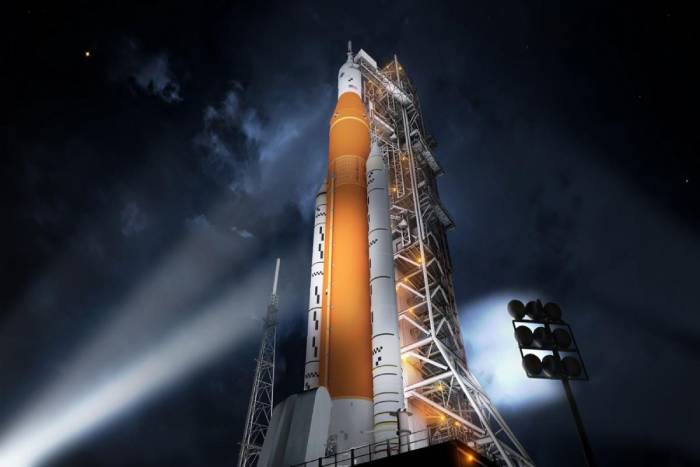The massive rockets that will transport NASA astronauts to the moon in a few years are starting to take shape.
NASA officials said in a brief status update provided on Tuesday (Jan. 11) that the agency and its manufacturing partners have made “excellent progress” on assembling the Space Launch System (SLS) rocket for Artemis 2, a crewed moon-orbiting mission scheduled to launch in 2024. SLS elements are also being tested and manufactured for the moon-landing Artemis 3 mission, which is set to launch no early than 2025, and its successor, Artemis 4, according to NASA.
“The Space Launch System team is not just building one rocket, but manufacturing several rockets for exploration missions and future SLS flights beyond the initial Artemis launch,” NASA’s Marshall Space Flight Center in Alabama’s John Honeycutt stated in the update.
“The Artemis 1 mission is the first in a series of increasingly complex missions that will extend our presence on the moon,” Honeycutt continued. “The SLS rocket’s unprecedented power and capabilities will send missions farther and faster throughout the solar system.”
The interim cryogenic propulsion stage (ICPS) for the Artemis 2 SLS was the first piece to arrive in Florida in July, near its launch site at NASA’s Kennedy Space Center (KSC). According to NASA officials, the ICPS is presently completing final preparations for delivery to KSC at United Launch Alliance (ULA) and Boeing facilities. The ICPS for the Artemis 3 SLS is being built at ULA’s Decatur, Alabama facility. The Orion crew capsule will be pushed toward the moon by this stage.
Meanwhile, NASA officials stated the boosters and RS-25 engines for the Artemis 2 and Artemis 3 rockets are “in the final stages of assembly.” At NASA’s Michoud Assembly Facility in New Orleans, the Artemis 2 engines are ready for integration with the SLS core stage, while the Artemis 3 engines are being prepared at an Aeroject Rocketdyne facility at NASA’s Stennis Space Center in Mississippi. (The RS-25’s principal contractor is Aerojet Rocketdyne.) Manufacturing of the RS-25 for missions beyond Artemis 4 is still going on.
Northrop Grumman personnel have finished casting booster motor segments for Artemis 2 and Artemis 3 in Utah, and are now working on segments for Artemis 4, according to NASA officials.
NASA also mentioned work on the cone-shaped launch vehicle stage adapters for Artemis 2 and 3, as well as panel production for a universal stage adapter test article for future flights, in its latest update.
Artemis is NASA’s crewed lunar exploration programme, with the goal of establishing a long-term human presence on and around the moon by the end of the decade.
The Artemis 3 mission, which is presently in development, aims to place astronauts on the lunar surface no later than 2025. Under President Donald Trump’s administration, the mission was initially scheduled for 2024. However, it was delayed for a variety of reasons, including financial challenges, technical worries over parts like as spacesuits, and a now-resolved federal dispute over the Artemis Human Landing System contract, which was given to SpaceX in April 2021.
- Google Messages Adds Two Powerful New Features for Android Users - April 23, 2025
- Google Fi Launches Budget-Friendly Unlimited Plan at $35 - April 23, 2025
- Who’s No. 1? Men’s Freestyle Seeds for 2025 US Open Wrestling Championships - April 23, 2025



